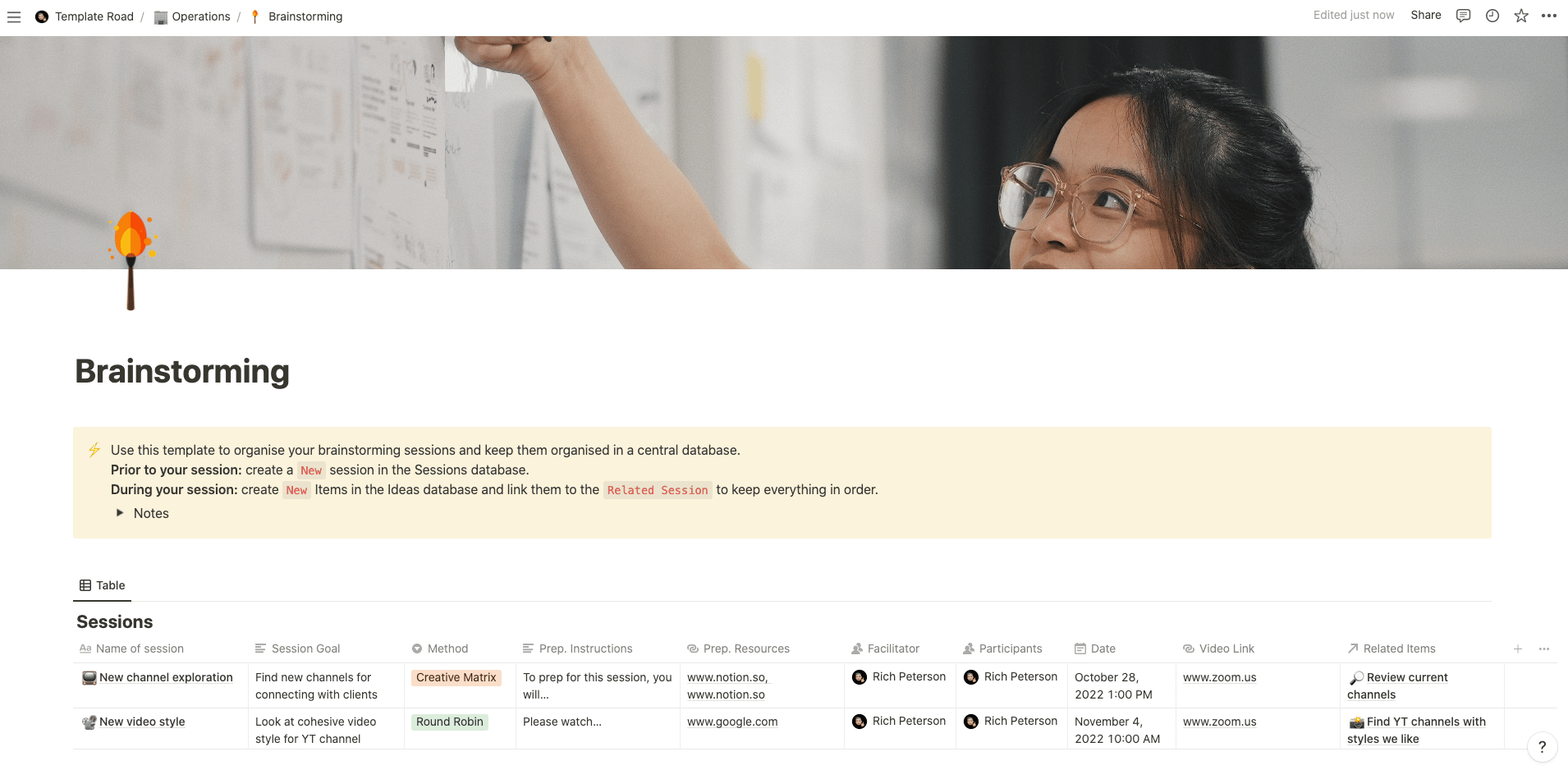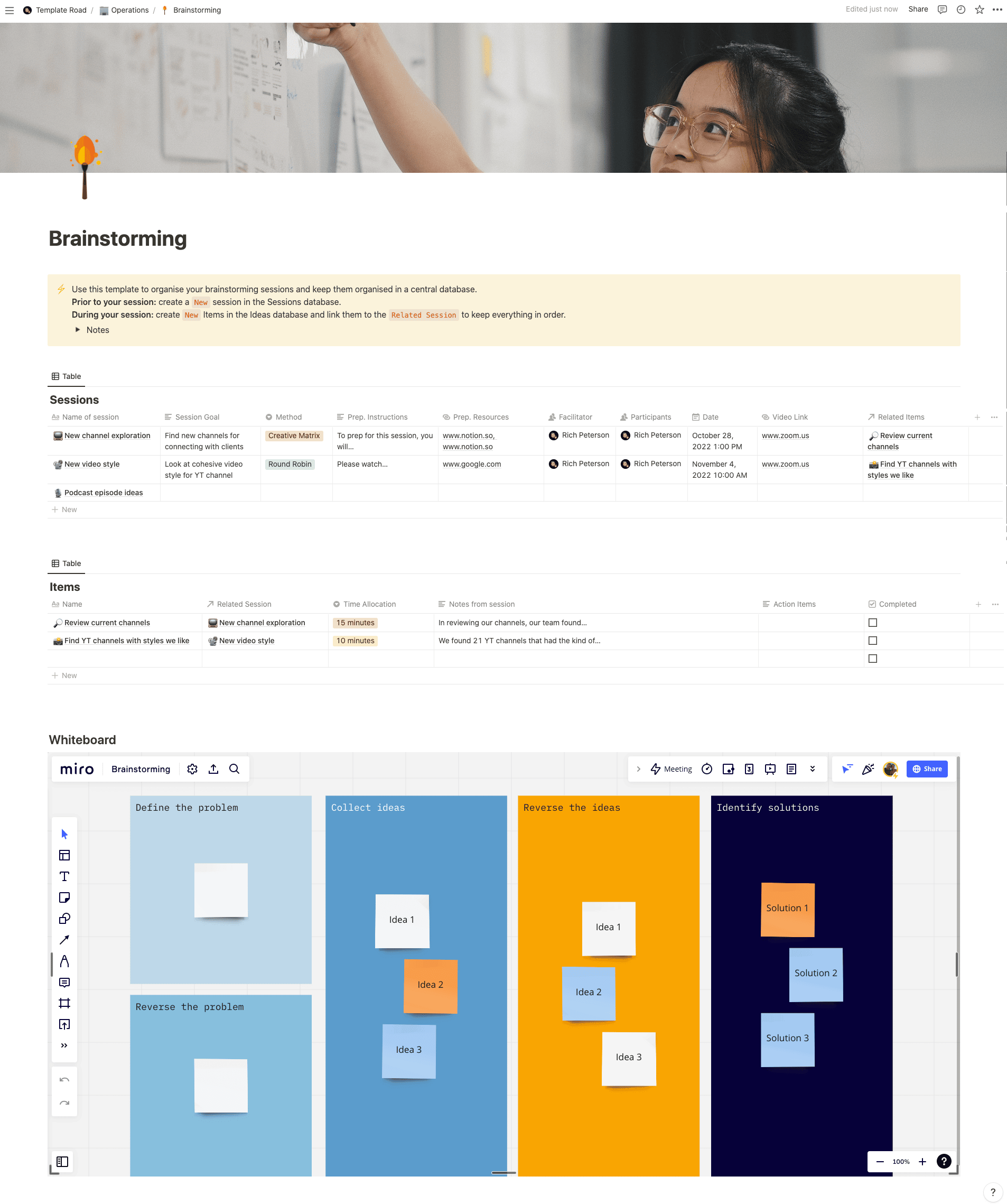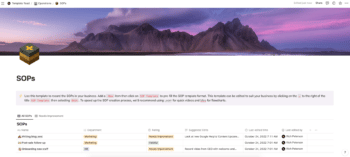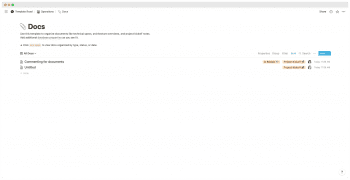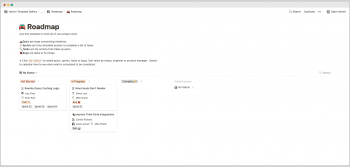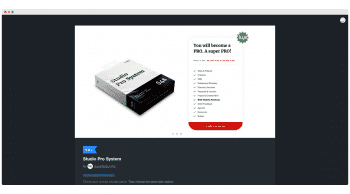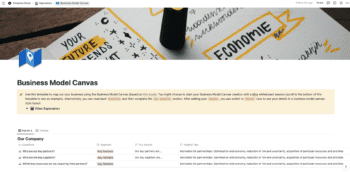This template is perfect for running a brainstorming session where all team members see their ideas discussed.
Contents
- Notion – Brainstorming Template
- What is a brainstorming meeting?
- How do I run a brainstorming session?
- What happens after the brainstorming session?
- What are the different types of brainstorming methods?
- How do I decide what brainstorming method to use?
- Benefits of brainstorming
- How does brainstorming work?
- Why is brainstorming effective?
Notion – Brainstorming Template
This template is perfect for running a brainstorming session where all team members see their ideas discussed. You know that your group is full of great ideas, and you want them to have ample opportunity to share them. You’ve put together plenty of brainstorm sessions in the past, and you’re feeling like they were unfocused and led to a lot of random proposals that you weren’t sure how to move forward with. This brainstorming template helps you host a productive and organized brainstorming session without stalling creativity and free thinking. Along with the visual brainstorming boards from MURAL, this tool can help you get all of your team’s brilliant ideas out in the public eye.
——————————————-
What you need before purchase
- Basic knowledge of how to use Notion
- Paid Notion account if you’re looking to add lots of content to your template / Notion account (sign up here). Not much content? You’re able to use their free account.
——————————————-
After purchase
After purchase, you’ll be able to view the template immediately. The template can be added to your Notion account by:
- Click on the template download link in Gumroad
- When viewing the Notion template, click on the “Duplicate” link in the top-right of your screen
- The template will now be available in your own Notion account
For ongoing use, the steps are:
- Login to Notion and select the template you want to view
- Click on the Duplicate link in the top-right of your screen to create a copy to use
- You’ll be able to retain the Notion template and work on the Duplicate (with a new name) and can repeat this process whenever you want to use the template again
What is a brainstorming meeting?
A brainstorming session is an informal, creative process that helps you generate ideas for your business or organization. It’s a way of getting people together to think about the problems they face and how they can be solved. The goal of a brainstorming session is to come up with as many solutions as possible. The more ideas you have, the better chance you have at finding one that works. Brainstorming sessions are often used in organizations to solve problems. They may also be held by individuals who want to find new ways to improve their lives or businesses.
How do I run a brainstorming session?
The first step in running a successful brainstorming session is to set clear goals. This will help everyone understand what you expect from them during the meeting. Next, choose a location where all participants can work comfortably. You might consider using a conference room or other space that has comfortable seating and good lighting. You should also make sure there is plenty of time available for the brainstorming session. Finally, decide on a method of communication. For example, if you are holding the brainstorming session online, you could use Notion (see template above) or another collaborative document editing tool. If you prefer to meet in person, you could use a whiteboard or flipchart paper.
Once you have decided on these things, it’s time to start planning the brainstorming session. Here are some tips:
- Set aside enough time for the brainstorming session so that everyone has adequate time to contribute.
- Make sure that everyone knows what the purpose of the brainstorming session is before beginning.
- Provide each participant with a list of topics to cover.
- Have each participant write down his or her thoughts on the topic.
- Ask questions to encourage discussion.
- Encourage participants to share their ideas freely without worrying about whether they are original or not.
- After the brainstorming session ends, collect the notes and organize them into groups based on similarity.
- Use this information to create actionable steps for solving the problem.
What happens after the brainstorming session?
After the brainstorming session, you need to evaluate the results. How did the group perform? Did any of the ideas seem promising? Was anything missing?
If you feel like the brainstorming session was productive, you might want to hold another one soon. Or, you might want to take the ideas generated during the brainstorming session and turn them into a plan of action.
If you don’t feel like the brainstorming was productive, try doing something different next time. Perhaps you could invite someone else to join the brainstorming session. Or, perhaps you could change the format of the brainstorming session. For example, instead of having people write down their ideas on separate sheets of paper, you could ask them to type their ideas directly into your shared document.
What are the different types of brainstorming methods?
There are many different brainstorming methods. Some of the most common include:
- Free association – In free association, participants are asked to think of as many words as possible related to a particular subject. The idea is to get as many creative solutions as possible.
- Word association – In word association, participants are given a specific word and are asked to come up with as many ideas as possible that relate to the word. This technique is often used when trying to find new ways to describe an existing concept.
- Visualization – In visualization, participants are shown images or diagrams that represent a certain situation. Participants then discuss how they would solve the problem represented by the image.
- Mind mapping – In mind mapping, participants draw pictures or symbols to represent concepts or ideas. They then connect those ideas together using lines or arrows.
- Concept mapping – In concept mapping, participants are given a set of problems to be solved. Then, they work together to develop a solution map that shows all of the relationships between the problems.
- Nominal Group Technique – In the nominal group technique, participants are divided into small groups. Each group is presented with a set of items and asked to select one item from the list. Once all of the groups have selected one item, the entire group votes on which item should be chosen.
How do I decide what brainstorming method to use?
The best way to determine which brainstorming method will work best for you is to experiment with several techniques. You can start by conducting a few brainstorming sessions with friends or colleagues. If you notice that some methods work better than others, you may want to continue using those methods in future brainstorming sessions. You also may want to consider whether you want to conduct a formal brainstorming session or just gather ideas informally. Formal brainstorming sessions tend to produce more structured results than informal brainstorming sessions. However, if you prefer to brainstorm informally, you may want to conduct a series of informal brainstorming sessions over a period of time. You might also want to consider whether you need to limit the number of ideas generated during each brainstorming session. If so, you may want to limit the number of people who participate in the brainstorming session.
Benefits of brainstorming
Brainstorming has been widely used since the 1950s. It is still commonly used today because it helps people generate a large number of ideas quickly. Brainstorming is particularly useful when there are too many ideas to process at once. When brainstorming, people typically focus on generating as many ideas as possible. As a result, brainstorming tends to lead to lots of “out-of-the-box” thinking. Out-of-the-box thinking is important because it allows people to explore different approaches to solving a problem. Another benefit of brainstorming is that it encourages creativity. People who brainstorm tend to become more open-minded and less judgmental about their own ideas.
How does brainstorming work?
There are two main types of brainstorming: free association and divergent thinking. Free association involves having individuals think about an issue without any restrictions. For example, you could ask your team members to write down everything they can think of that relates to the topic of the meeting. This type of brainstorming is often referred to as “free writing.” Divergent thinking involves having individuals come up with new ways of looking at a problem. For example, you might ask your team members to create a list of words related to the topic of the discussion. Afterwards, you could encourage them to combine these words into phrases or sentences.
Why is brainstorming effective?
Although brainstorming is not always effective, it is very helpful when dealing with complex issues. The following 20 factors contribute to its effectiveness:
- It provides a structure for gathering ideas.
- It generates a lot of ideas.
- It increases the likelihood that people will be able to identify creative solutions to problems.
- It reduces bias.
- It promotes group cohesion.
- It improves communication skills.
- It stimulates interest in the subject matter.
- It forces people to look beyond their current perceptions.
- It creates a sense of urgency.
- It fosters innovation.
- It helps people overcome obstacles.
- It gives people permission to express themselves freely.
- It helps people develop confidence in their ability to solve problems.
- It helps people build relationships.
- It helps people learn from one another.
- It helps people understand how others perceive the same situation.
- It helps people see things from other perspectives.
- It helps people recognize patterns.
- It helps people make connections between seemingly unrelated topics.
- It helps people find common ground.
